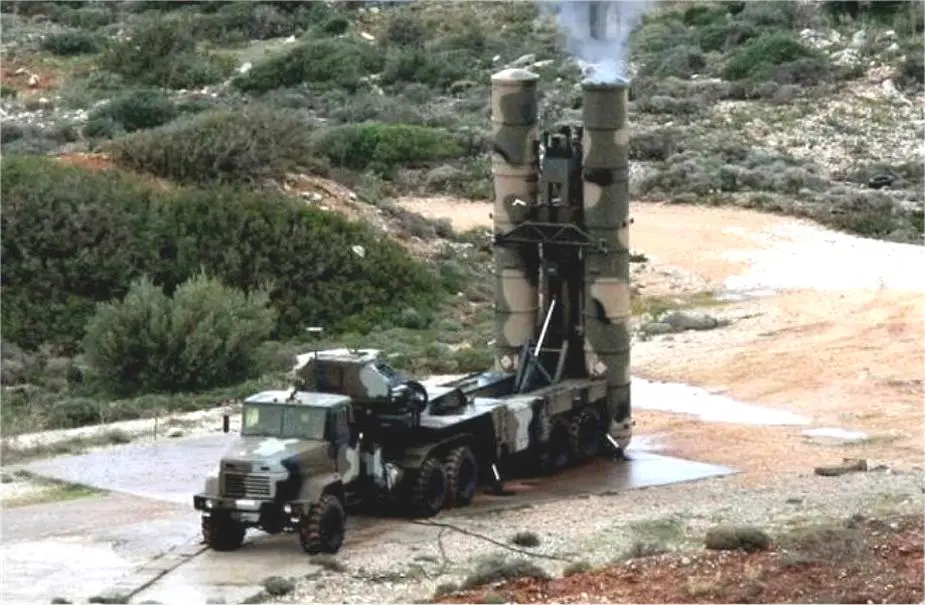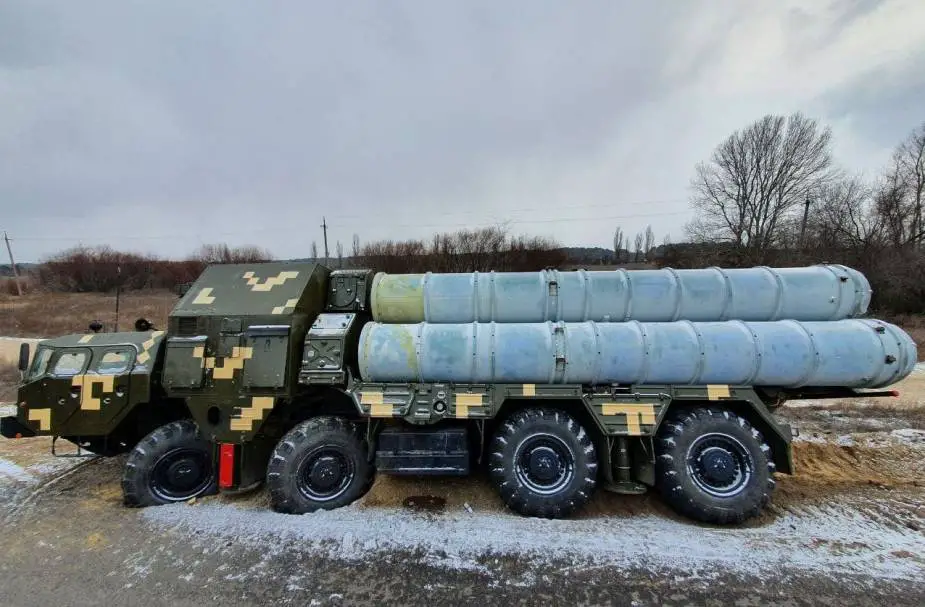According to Tasos Kokkinidis in Greek Reporter, Keith Kellogg, a U.S. retired general, has advised Ukraine on Monday, March 14, to ask Greece, Bulgaria and Slovakia to offer their Russian-made S-300 surface-to-air missile systems to help defend against the Russian invasion.
Follow Army Recognition on Google News at this link

Hellenic army S-300 Transporter Erector Launcher unit. (Picture source: Twitter account of Charalampos of Thessaloniki)
Speaking on Fox News, Keith Kellogg (1), formerly the National Security Advisor to then-Vice President Mike Pence, remarked that if the West won’t let Ukraine have additional MiG fighter jets to fend off Kremlin attackers, they should seek projectile-based help from certain NATO-member countries. The general said two Balkan countries, Greece and Bulgaria, along with fellow NATO member Slovakia, all have S-300 missile technology that itself was originally designed by Russia. “The thing they should do is go to Bulgaria, Slovakia, and Greece, which are three NATO nations, and they’ve got a system called the S-300, which is a Russian system that shoots down ballistic missiles and anti-aircraft [projectiles] as well, and put it around those point-targets and defend it,” he said. “It’d be kind of nice to have a Russian system shoot down a Russian aircraft,” he said.
The S-300 (NATO reporting name: SA-10 Grumble) is a series of initially Soviet and later Russian long-range surface-to-air missile systems produced by NPO Almaz, based on the initial S-300P version. The S-300 system was developed to defend against aircraft and cruise missiles for the Soviet Air Defence Forces. Subsequent variations were developed to intercept ballistic missiles. The S-300 system was first deployed by the Soviet Union in 1979, designed for the air defense of large industrial and administrative facilities, military bases and control of airspace against enemy strike aircraft. The system is fully automated, though manual observation and operation are also possible. Components may be near the central command post, or as distant as 40 km. Each radar provides a target designation for the central command post. The command post compares the data received from the targeting radars up to 80 km apart, filtering false targets. The central command post features both active and passive target detection modes.
The project-managing developer of the S-300 is Almaz-Antey. S-300 uses missiles developed by both MKB "Fakel" and NPO Novator design bureaus (separate government corporations, previously named "OKB-2" and "OKB-8").
The S-300 is regarded as one of the most potent anti-aircraft missile systems currently fielded. It is mainly used in Asia and Eastern Europe, including three NATO member countries: Bulgaria, Greece, and Slovakia. An evolved version of the S-300 system is the S-400 (NATO reporting name: SA-21 Growler), which entered service on 28 April 2007.

Greece suggested sending its S-300 air defense missiles to Ukraine (Picture source: Twitter account of Blue Sauron)
Greece’s S300 system
Greece’s S-300 surface-to-air-missile (SAM) system is based on the island of Crete. The Greek military held live-fire test drills at NATO Missile Firing Installation (NAMFI) located on Crete. The system was transferred from Cyprus after the island’s controversial decision in 1997 to install two Russian-made S-300 air-defense missile sites on its territory, provoking Turkey into threatening an attack or even all-out war if the missiles were not returned to Russia.
Notice that Greece operates S-300 missiles in the S-300PMU1 version, while Ukraine operates 4 other versions: S-300V, S-300P, S-300PS, and S-300PT.
Greek military assistance to Ukraine
In late February, just days after the Russian invasion (February 24), Greece dispatched military aid to help Ukraine. The decision followed the Russian advance in Ukraine and the killing of at least 10 ethnic Greeks near the city of Mariupol by Russian fire. The government announced that it sent to Poland two C-130H Hercules loaded with military aid, including portable rocket launchers, ammunition, and Kalashnikov rifles. A separate shipment of humanitarian aid was also sent the same day, accompanied by deputy Defense Minister Nikos Hardalias.
(1) Note: Joseph Keith Kellogg Jr. (born May 12, 1944) is a former U.S. government official and a retired lieutenant general in the U.S. Army. He previously served as the National Security Advisor to Vice President Mike Pence, and as the Executive Secretary and Chief of Staff of the U.S. National Security Council in the Trump administration. He served as National Security Advisor on an acting basis following the resignation of Michael T. Flynn.














